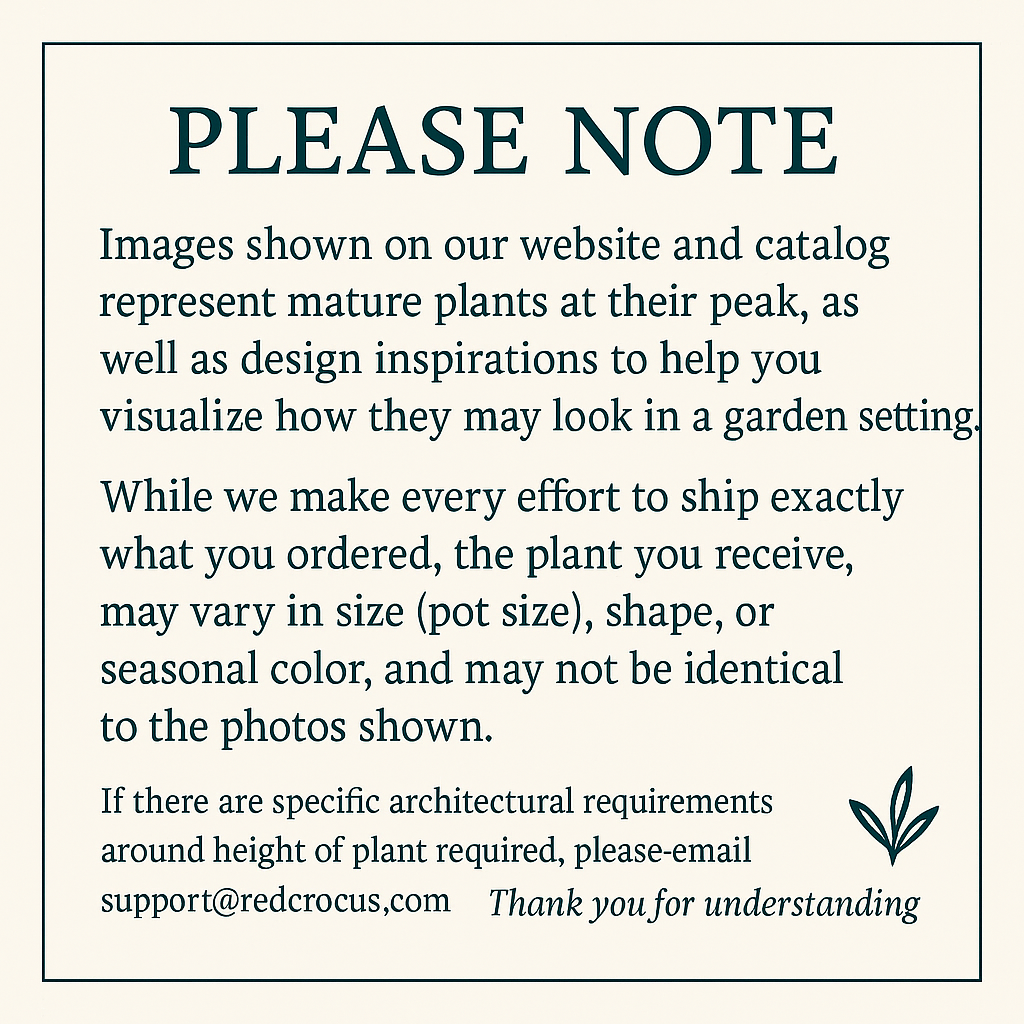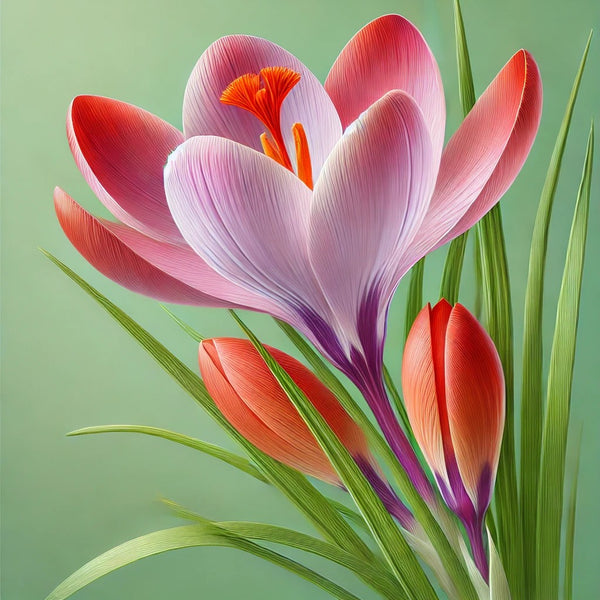1
/
of
22
Climbing Hydrangea–Espalier–Vertical Interest Plant 7 Gallon
Climbing Hydrangea–Espalier–Vertical Interest Plant 7 Gallon
Regular price
$460.00 USD
Regular price
$598.00 USD
Sale price
$460.00 USD
Unit price
/
per
Shipping calculated at checkout.
SKU:nsf5554-redcrocus
Couldn't load pickup availability
Hydrangea petiolaris Espalier
Description
The Hydrangea petiolaris Espalier, commonly known as the Climbing Hydrangea, is a deciduous vine that is perfect for adding vertical interest to gardens. It features lush green foliage and produces beautiful clusters of white flowers in the summer. This plant is known for its ability to climb walls, fences, and trellises, making it a versatile choice for gardeners looking to cover vertical spaces.
Suggested Uses
Ideal for use on walls, fences, trellises, or as a ground cover. It can also be trained to grow on arbors or pergolas, providing a stunning floral display. Suitable for cottage gardens, woodland gardens, or as a feature plant in larger landscapes.
Plant Details
-
 Botanical Name: Hydrangea petiolaris Espalier
Botanical Name: Hydrangea petiolaris Espalier -
 Common Name: Climbing Hydrangea Espalier, Trellis, or Staked
Common Name: Climbing Hydrangea Espalier, Trellis, or Staked -
 Size & Growth: Can reach up to 30-50 feet in height when mature
Size & Growth: Can reach up to 30-50 feet in height when mature -
 Hardiness Zones: 4-8
Hardiness Zones: 4-8 -
 Foliage Type: Deciduous
Foliage Type: Deciduous -
 Bloom Time: Late spring to early summer
Bloom Time: Late spring to early summer -
 Growth Rate: Slow to moderate
Growth Rate: Slow to moderate -
 Light Requirements: Partial shade to full shade
Light Requirements: Partial shade to full shade -
 Attracts Pollinators: Yes, attracts bees and butterflies
Attracts Pollinators: Yes, attracts bees and butterflies -
 Indoor Friendly: No
Indoor Friendly: No -
 Container Friendly: No, prefers to be planted in the ground
Container Friendly: No, prefers to be planted in the ground -
 Deer Resistant: Yes
Deer Resistant: Yes -
 Pet Warning: Non-toxic to pets
Pet Warning: Non-toxic to pets -
 Fragrant: No
Fragrant: No -
 Cut Flower: Yes, suitable for floral arrangements
Cut Flower: Yes, suitable for floral arrangements -
 Grows Well With: Clematis, Ivy, and other shade-tolerant plants
Grows Well With: Clematis, Ivy, and other shade-tolerant plants
Care Tips
-
 Planting Instructions: Plant in spring or fall, ensuring the root ball is level with the soil surface
Planting Instructions: Plant in spring or fall, ensuring the root ball is level with the soil surface -
 Soil Moisture: Keep soil consistently moist, especially during dry spells
Soil Moisture: Keep soil consistently moist, especially during dry spells -
 Soil Type: Prefers rich, well-drained soil
Soil Type: Prefers rich, well-drained soil -
 Humidity: Thrives in humid conditions
Humidity: Thrives in humid conditions -
 Pruning Instructions: Prune in late winter or early spring to remove dead or damaged wood
Pruning Instructions: Prune in late winter or early spring to remove dead or damaged wood -
 Winter Care: Mulch around the base to protect roots in colder climates
Winter Care: Mulch around the base to protect roots in colder climates -
 Planting Depth: Plant at the same depth as in the nursery pot
Planting Depth: Plant at the same depth as in the nursery pot -
 Fertilization: Apply a balanced fertilizer in spring
Fertilization: Apply a balanced fertilizer in spring -
 Special Care: Provide support for climbing, such as a trellis or wall
Special Care: Provide support for climbing, such as a trellis or wall
Share












































